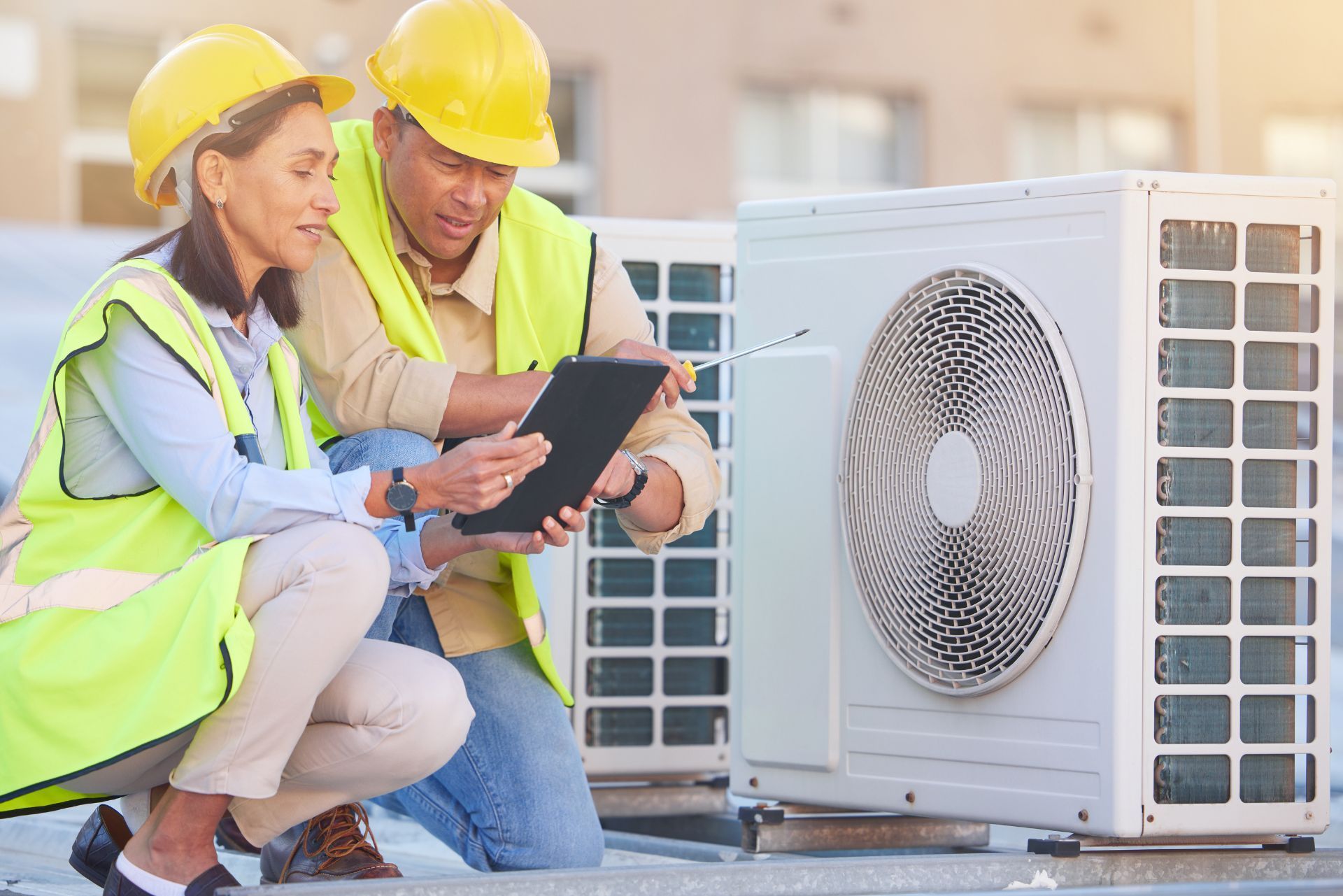Top 3 Recommended Policies

For HVAC contractors, securing the right insurance coverage is more than a regulatory checkbox—it’s a critical safeguard against the unique risks of the industry. With rising costs, evolving claims patterns, and new threats like cyber risks, understanding HVAC contractor insurance has never been more important. This comprehensive guide will walk you through key aspects of insurance for HVAC professionals, helping you make informed decisions to protect your business and clients.
Why HVAC Contractors Need Specialized Insurance
HVAC contractors face a variety of risks that differ significantly from other trades. From handling complex refrigeration systems to working in extreme weather conditions, the potential for property damage, bodily injury, and equipment failure is high. Insurance tailored to these challenges helps contractors mitigate financial losses and maintain client trust.
General liability insurance is a cornerstone of HVAC coverage. It typically covers claims related to property damage or bodily injury caused by your work. According to ContractorNerd, general liability premiums for HVAC contractors generally range from 1% to 3.5% of annual revenue, reflecting the risk profile of the trade. This percentage varies based on location, business size, and claims history.
Without proper insurance, a single accident or claim could jeopardize your business’s financial stability. Moreover, many clients now require proof of insurance before awarding contracts, making coverage essential for competitiveness.
In addition to general liability insurance, HVAC contractors should also consider specialized coverages such as equipment breakdown insurance. This type of policy protects against the costs associated with the failure of essential tools and machinery, which can be a significant financial burden. For instance, if a contractor's HVAC unit malfunctions during a peak season, the ensuing downtime can lead to lost revenue and dissatisfied customers. Having equipment breakdown insurance ensures that contractors can quickly repair or replace their tools, minimizing disruption and maintaining service quality.
Furthermore,
workers' compensation insurance is crucial for HVAC contractors, as the nature of the work often involves physical labor and exposure to hazardous conditions. This insurance not only protects the contractor from liability in case of employee injuries but also fosters a safer work environment by encouraging adherence to safety protocols. With the right insurance in place, HVAC contractors can focus on their work with peace of mind, knowing they are protected against the unpredictable nature of their trade.

Understanding the Cost of HVAC Contractor Insurance
Insurance premiums for HVAC contractors can vary widely depending on several factors such as the size of the business, location, and coverage limits. A survey by Simply Business found that 67% of HVAC contractors pay between $25 to $95 per month for insurance coverage. This range reflects the diversity within the industry, from small independent contractors to larger firms with multiple employees.
State-by-state differences also play a significant role. For example, ContractorNerd’s guide highlights that HVAC insurance premiums can vary dramatically, with potential savings ranging from 9% to as much as 86% depending on the state. This variation underscores the importance of shopping around and understanding local market conditions when selecting insurance.
Besides general liability, HVAC contractors often need additional coverage such as workers’ compensation, commercial auto insurance, and equipment coverage. Each adds to the overall cost but provides critical protection against specific risks. For instance, workers’ compensation is essential for safeguarding against workplace injuries, which can be common in the HVAC field due to the physical nature of the work. Without this coverage, a single injury could lead to significant financial strain on a contractor's business.
Moreover, the type of projects undertaken can influence insurance costs. Contractors who frequently work on larger commercial projects may face higher premiums due to the increased risks involved. In contrast, those focusing on residential jobs might find their insurance costs more manageable. Additionally, the experience level of the contractor can also impact rates; seasoned professionals with a solid track record of safety may qualify for lower premiums, while newer contractors might be seen as higher risk. This dynamic highlights the importance of maintaining a good safety record and investing in training to not only enhance skills but also to potentially reduce insurance costs over time.
Emerging Risks and Claims Trends in HVAC Insurance
The HVAC industry is experiencing shifts in claims patterns that impact insurance risk assessments. The HVACi 2024 Annual Claims Report revealed that 39% of evaluated HVAC and refrigeration equipment losses stemmed from causes not typically covered by standard insurance policies. This trend highlights the growing complexity of claims and the need for contractors to understand policy exclusions carefully. As technology advances, the integration of smart systems and IoT devices in HVAC units introduces new vulnerabilities, making it essential for contractors to stay abreast of the latest developments in both technology and insurance coverage.
Additionally, the HVACi 2023 Annual Claims Report pointed out that rising parts and labor costs, inaccurate peril reporting, and extreme weather events have increased risks for insurers in the HVAC sector. These factors contribute to higher premiums and more stringent underwriting standards. The increased frequency of severe weather patterns, such as hurricanes and heatwaves, has led to a surge in demand for HVAC services, which, while beneficial for contractors, also elevates the risk of claims related to equipment failure and property damage. Understanding these dynamics can help contractors better navigate the insurance landscape and prepare for potential challenges.
Contractors should stay informed about these developments and consider working with insurance providers who specialize in HVAC coverage to ensure adequate protection. Furthermore, investing in training and education on risk management practices can empower contractors to mitigate potential claims effectively. This proactive approach not only enhances their operational resilience but also fosters stronger relationships with insurers, who are increasingly looking for clients that demonstrate a commitment to reducing risk. By adopting best practices and leveraging technology, HVAC contractors can position themselves favorably in a rapidly evolving insurance market.
Protecting Against Modern Threats: Cybersecurity and Ransomware
As HVAC systems become increasingly integrated with smart technology, cybersecurity risks have surged. Business owners are now more aware of vulnerabilities related to cyber threats and ransomware attacks. Rob Chenoweth, associate vice president at Nationwide Mutual Insurance Co., notes, “With the risks for cyber threats and ransomware on the rise, we are seeing an influx of coverage requests from business owners to add cyber-recovery and ransomware protection to their policies.”
This emerging coverage is crucial for HVAC contractors who manage sensitive client data or operate connected systems. Cybersecurity insurance can cover expenses related to data breaches, ransomware payments, and recovery efforts, helping businesses bounce back quickly from attacks.
Given the increasing frequency of cyber incidents, adding this layer of protection is becoming a standard part of comprehensive HVAC insurance packages. Moreover, the integration of IoT devices in HVAC systems not only enhances efficiency but also opens new avenues for cybercriminals. Each connected device can serve as a potential entry point for hackers, making it essential for contractors to implement robust cybersecurity measures. Regular software updates, strong password protocols, and employee training on recognizing phishing attempts are vital steps in safeguarding these systems.
In addition to insurance, HVAC companies are encouraged to adopt a proactive cybersecurity strategy. This includes conducting regular vulnerability assessments and penetration testing to identify and address potential weaknesses before they can be exploited. By investing in cybersecurity training for staff, businesses can cultivate a culture of security awareness, ensuring that every employee understands their role in protecting sensitive information. As the landscape of cyber threats continues to evolve, staying informed about the latest security technologies and best practices will be key to maintaining the integrity of HVAC operations and client trust.
The Power of Reputation: How Word of Mouth Influences HVAC Business Growth
Insurance is not the only factor that influences an HVAC contractor’s success. Marketing and customer retention also play vital roles. Mike Zeppetello, consultant and marketing lead at Powerhouse Consulting Group, explains, “The traditional [word of mouth] definition has not gone away; it’s now been supercharged.” This means that while personal recommendations remain critical, online reviews and social media amplify their impact.
In fact, a survey by ACHR News found that 73% of homeowners choose their HVAC contractor by contacting the same company they’ve used before—a 44% increase from the previous year. This loyalty underscores the importance of consistent service quality and maintaining a strong reputation.
For contractors, this means that investing in insurance is also an investment in credibility. Being fully insured reassures clients and can be a powerful selling point in competitive markets. Additionally, contractors who prioritize transparency in their operations often find that their clients are more willing to recommend them to friends and family. When customers feel informed and valued, they are more likely to share their positive experiences, further enhancing the contractor's reputation.
Moreover, the rise of digital platforms has transformed how HVAC businesses can leverage their reputation. Social media channels, review sites, and local business directories provide a stage for satisfied customers to voice their approval, often reaching a wider audience than traditional word of mouth ever could. Engaging with customers online, responding to reviews—both positive and negative—and showcasing successful projects can create a dynamic presence that attracts new clients. This proactive approach not only builds trust but also fosters a community of loyal customers who feel connected to the brand, thereby driving sustained growth in the HVAC industry

Tips for Choosing the Right HVAC Insurance Policy
Selecting the right insurance policy involves more than just comparing prices. Contractors should consider the scope of coverage, exclusions, claims handling reputation, and the insurer’s experience with HVAC businesses.
Start by assessing your business’s specific risks, including the types of jobs performed, equipment used, and geographic area served. Then, work with an insurance agent who understands the HVAC industry to tailor a policy that fits your needs.
Regularly review your coverage to adapt to changes such as business growth, new services, or emerging risks like cyber threats. Staying proactive ensures you’re not caught off guard by gaps in protection.
In addition to the basic coverage, consider additional endorsements that can enhance your policy. For instance, if your business frequently works with high-value equipment or specialized tools, equipment breakdown coverage can protect against costly repairs or replacements. Similarly, if you offer maintenance contracts, look into liability coverage that specifically addresses issues arising from service-related incidents. These tailored options can provide peace of mind and financial security in the face of unexpected challenges.
Furthermore, it’s essential to evaluate the insurer’s customer service and claims process. A company that is difficult to communicate with or has a slow claims process can lead to frustration during critical times. Look for reviews and testimonials from other HVAC contractors to gauge the insurer’s reliability and responsiveness. Engaging with industry forums or local contractor associations can also provide insights into which insurers are favored by your peers, helping you make an informed decision that aligns with your business's values and needs.
Conclusion: Securing Your HVAC Business’s Future
Insurance is a foundational element for any HVAC contractor aiming for long-term success. With premiums typically ranging from 1% to 3.5% of annual revenue and monthly costs varying widely, understanding your options is key to balancing cost and coverage. Staying abreast of claims trends, emerging risks like cyber threats, and the power of customer loyalty can help contractors build resilient businesses.
By choosing the right insurance policies and maintaining a strong reputation, HVAC contractors can protect their operations, satisfy client expectations, and thrive in a competitive industry. For more detailed insights on insurance costs and coverage options, resources like
ContractorNerd and
Simply Business offer valuable guidance tailored to HVAC professionals
Contact Us
